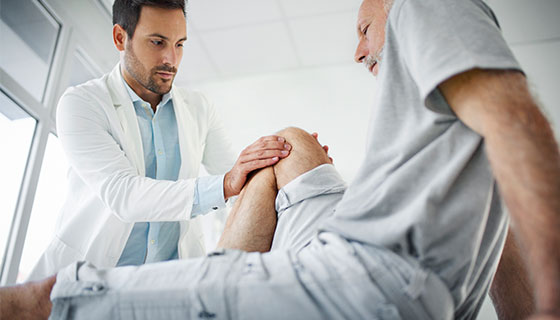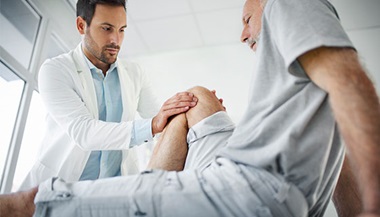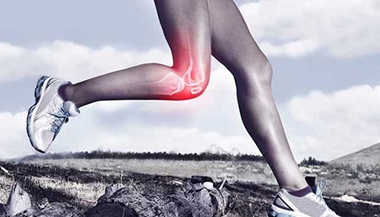Knee Replacement Alternatives to Consider
Crunching sounds as you climb stairs, chronic aching and swelling: Knee osteoarthritis is a real pain. If you’re suffering with it, you may be considering surgery.
Getting a knee replacement is one approach, but you may not need surgery, at least not right away. And some patients cannot undergo knee replacement surgery for various reasons. Other people with knee pain are too young for a knee replacement — the artificial knee is only likely to last 15 or 20 years, after which the person may need revision surgery.
There are several things you can try first, on your own or with a professional’s help, that can help with knee pain and even delay the need for replacement.
Arthritis doesn’t go away, but there are things you can do to lessen the pain and stay more active.
Lose Weight to Lessen Stress on Your Knees
Extra weight puts pressure on the knees and increases stress on the joint, increasing pain and making it hard to exercise. Research compiled by the Johns Hopkins Arthritis Center confirms that carrying extra pounds raises your risk of developing knee arthritis and speeds up the destruction of cartilage that cushions the joint.
It’s not easy, but losing weight can help, whether you’re dealing with arthritis in one or both knees. If you are overweight or obese, consulting with a nutritionist or a bariatric specialist may be the right place to start.
Try Low-Impact Exercise for Strength and Mobility
Strengthening the quadriceps and hamstring muscles in the leg is going to help reduce pain and make it easier to stay mobile. Experts recommend a regular low-impact exercise, such as riding a bike or walking on a treadmill.
A course of physical therapy can really help. A physical therapist can work with you and put together an individualized program.
Use Pain Medications with Care
Except in very rare cases, the American Association of Hip and Knee Surgeons advises against using opioid medications for knee osteoarthritis. Opiate pain relievers, in addition to being addictive, are not proven to address knee pain over the long term any better than nonsteroidal, anti-inflammatory drugs (NSAIDs).
Though safer than opioid drugs, NSAIDs aren’t for everyone, and experts advise caution in using them. Even over-the-counter drugs like naproxen and ibuprofen can have side effects, so check with your doctor.
You can get an increase in blood pressure with NSAIDs. Larger studies have linked some of these pain relievers with a small increase in the risk of heart attack and the more you take, the more likely you are to have heartburn, stomach irritation or even bleeding ulcers.
Ask Your Doctor About These Treatments
Injections for Knee Pain
There is good science behind cortisone shots and other injections, such as hyaluronic acid (HA) injections, that lubricate the inner workings of the knee and help relieve arthritis pain.
According to experts, there is less evidence supporting the benefits of other injectable substances, including platelet-rich plasma (PRP) and concentrated bone marrow or stem cells, but further studies will reveal more about their efficacy in treating knee arthritis.
Injections can provide temporary relief — typically a few months — which can help you stay on your feet and postpone surgery.
Cartilage Regeneration
For knees with a limited amount of arthritis and good alignment of the bones, doctors may be able to offer newer treatments that replace cartilage instead of replacing the entire joint.
There are several cartilage-regeneration techniques that you may consider and discuss with an orthopaedic surgeon.
Autologous chondrocyte implantation (ACI), for example, involves taking a sample of your cartilage cells, growing them in a lab and then surgically replanting them in your knee. It’s not for everyone, but young people and athletes affected by cartilage loss may be candidates.
Radiofrequency Ablation (RFA) for Knee Pain
If all of these methods fail to control your knee pain from osteoarthritis, there are still options. Radiofrequency ablation controls pain in the knees by destroying the sensory nerves that carry the pain signal from the knee to the brain.
RFA is likely a temporary fix, as nerves will grow back in six months to two years, and the pain may return.
When It’s Time for Knee Replacement Surgery
Knee arthritis can get worse in spite of treatment. If you’ve tried these methods and are still dealing with pain, it might be time to discuss knee replacement with an experienced orthopaedic surgeon. Total knee replacement is a major procedure, but it can offer better quality of life and improved mobility that last for many years.
A total knee replacement is more of a resurfacing of the bones in the knee: the end of the femur (thigh bone), the top of the tibia (the thicker of the two bones in the shin) and the inward facing surface of the patella, or kneecap. The surgeon removes the bony surfaces and replaces them with metal and plastic implants. The plastic serves the same purpose as the cartilage, helping the implants glide against each other smoothly.
There are constant innovations in the field of knee replacement. For instance, more surgeons are using regional anesthesia for the procedure, which can mean a shorter hospital stay compared with when general anesthesia is used. New multimodal pain approaches, surgical techniques and physical therapy after these surgeries are all improving a patients’ knee replacement experience.






